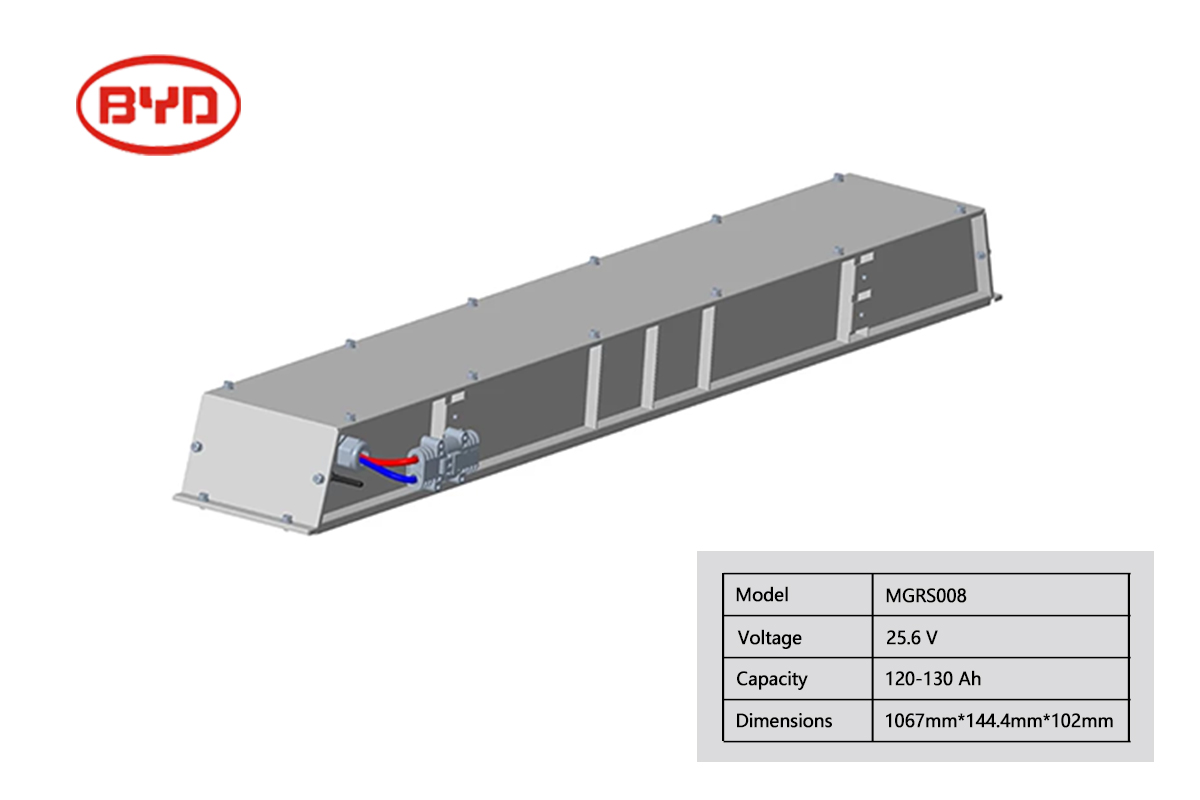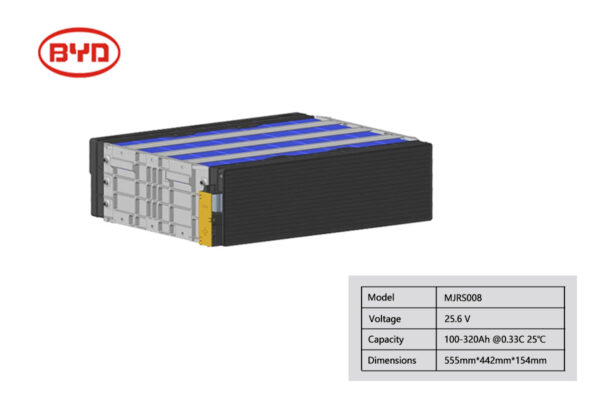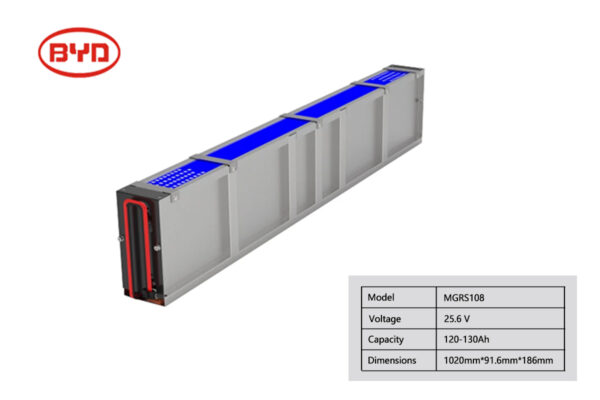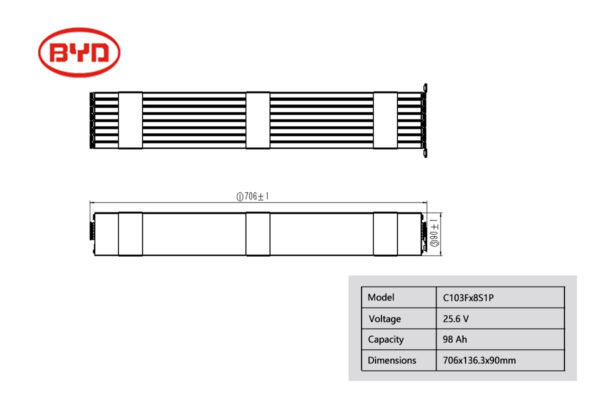Specifications
| Nominal Voltage | 25.6V |
| Nominal Capacity | 120Ah/130Ah |
| Charge Current | 60A |
| Charge Cut-off | 3.8V/Cell |
| Discharge Current | 60A |
| Discharge Cut-off | 2.7V/Cell |
| Shipment SOC | 20%~40% |
| Shipment Voltage | 3.20V~3.30V |
| Charge Temperature | 0~+55°C |
| Discharge Temperature | -20~+55°C |
| Normal Storage | -10~+55°C |
| Storage Humidity | 5%~95% |
| Dimensions | 1067mm*144.4mm*102mm |
| Weight | 26kg |
| Built-in BMS | Yes |
| Applications | Truck Air Conditioner |
LFP in energy storage
Lithium-ion batteries are an integral part of the transition to renewable energy, both for the automotive sector’s transition to green mobility, and for the transition to generating electricity from more reliable and sustainable technologies. As renewable energy sources such as solar and wind are intermittent and therefore unreliable power sources, energy must be stored for certain periods of time. Technologies are required to stabilize the grid by ensuring that energy is released into the grid or removed from the grid when necessary.
Two major lithium-ion technologies are currently used in the field of stationary energy storages: NMC (Nickel Manganese Cobalt) and LFP (Lithium Iron Phosphate). NMC is currently the most mature existing technology, and it is therefore widely used, especially in the automotive industry. However, LFP is becoming more and more popular in energy storage, which brings unique challenges, particularly regarding state estimations such as State of Charge.
Using LiFePo4 Battery pack advantages
- Longer battery life – 5000times life cycle @60%DOD, 5 times more than lead acid batteries
- Low self-discharge <3% per months
- Free of charge memory
- Steady discharge and charge performance
- Outstanding thermal stability
- Wide temperature performance
- Short circuit protection
- Over charge and over discharge protection
- Over current protection
- Easy carrying and installation – can be carried and installed in any direction
- Fast charging – about 1~2 hours to be fully charged
- Lighter weight – 1/2~1/4 lighter in weight compared to LA batteries
- Require no change to a lead acid battery charging system
- Better safety – mild warm, no explosion, fire, or leakage
- Environmentally friendly – no poisonous lead, no acid, no heavy/rare metals
- No gasses during charge, free of leakage and pollution
Finding the right model for your needs as below:
BYD modules
| Model | Combination Method | Nominal Voltage | Nominal Capacity |
| MCRSA08 | C15Hx8S | 25.6V | 150~260Ah |
| MJRS008 | C15x8S | 25.6V | 100~320Ah |
| MHRS108 | C16x8S | 25.6V | 180~200Ah |
| MGRS108 | C102Fx8S | 25.6V | 120~130Ah |
| MGRS016 | C102Fx16S | 51.2V | 120~130Ah |
| MGRS008 | C102Fx8S+ BMS | 25.6V | 120~~130Ah |
| MDRS008 | C17x8S | 25.6V | 40~60Ah |
| ES6.6D | C102fx16S+BMS | 51.2V | 120~130Ah |
| FM48100 | 4P16S+BMS | 51.2V | 100Ah |
| FL12100N | 4S4P+BMS | 12.8V | 100Ah |
| ES12200R | C15x4S+BMS | 12.8V | 150~300Ah |



